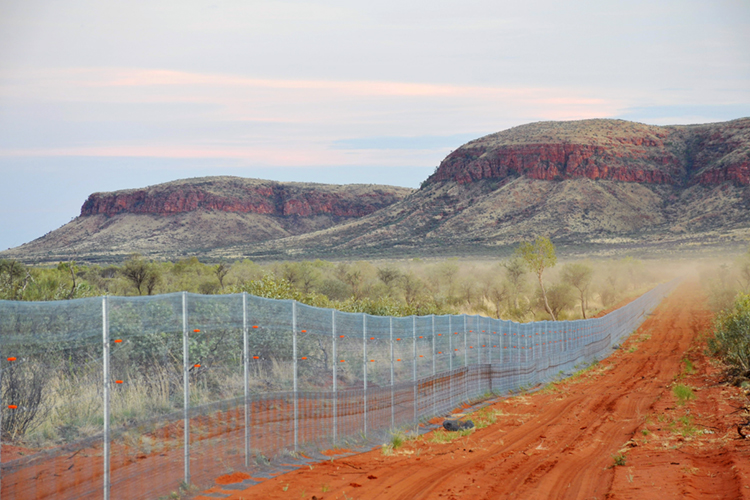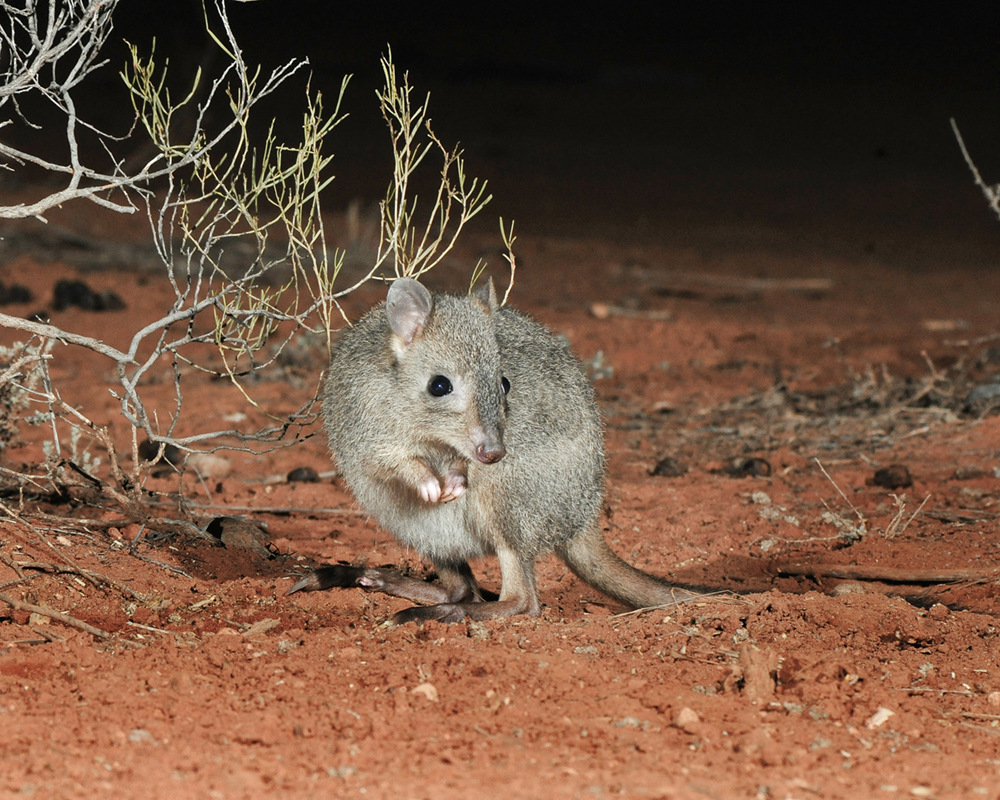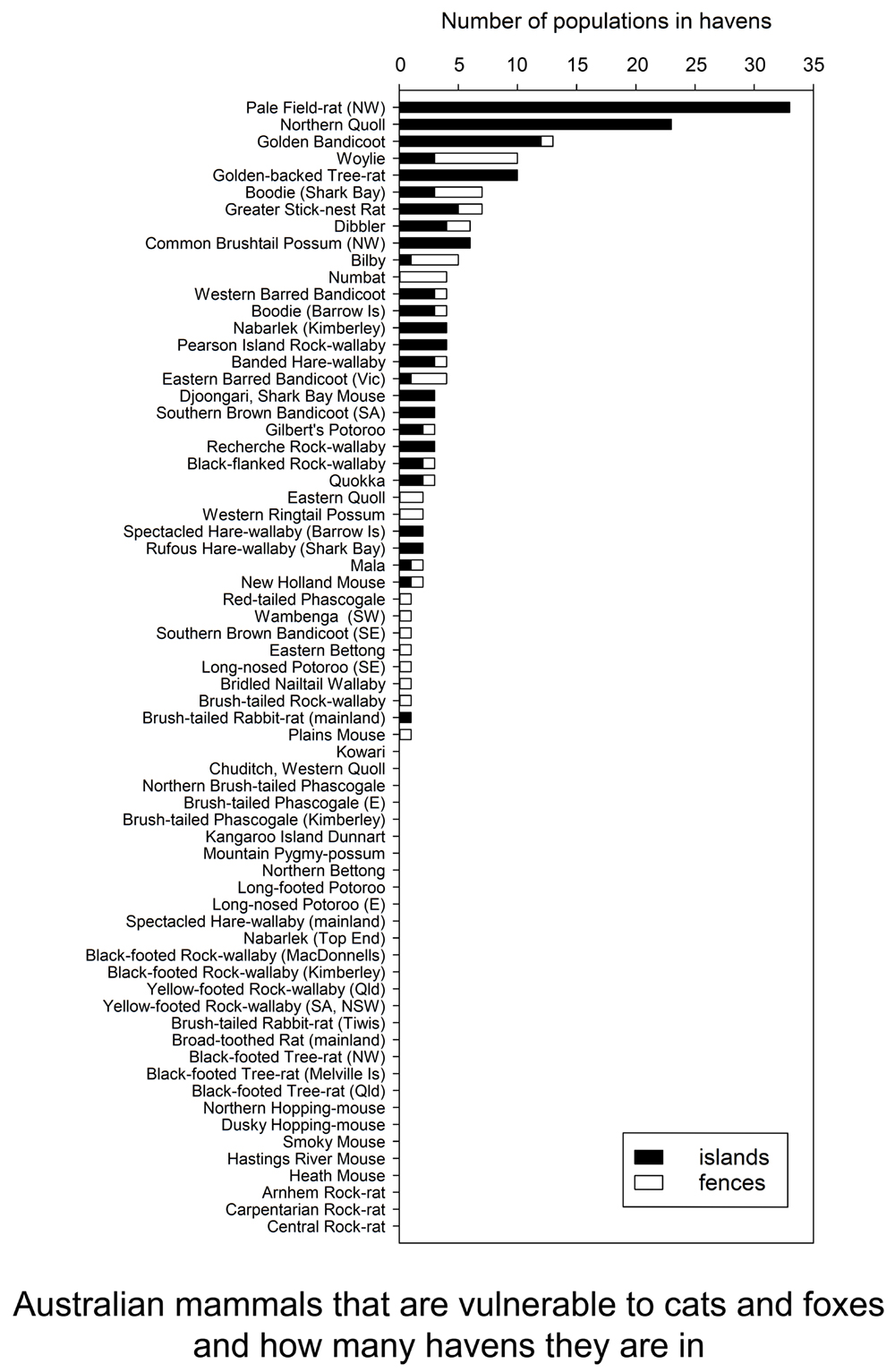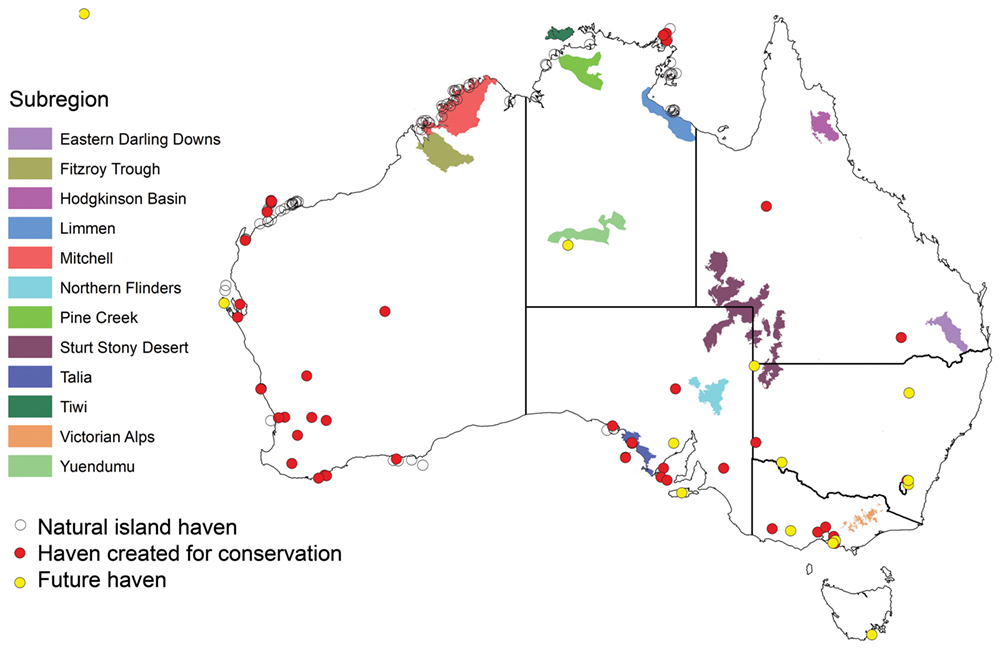
Thirteen mammal extinctions prevented by havens, study
Monday, 04 March 2019Havens - islands and fenced conservation areas that are free of feral cats and foxes - have already prevented 13 mammal extinctions in Australia, and supported improved conservation for many other species.
A stocktake of where Australia’s havens are, what native mammal species are in them, and where future havens need to go to prevent further extinctions
has been released by the Threatened Species Recovery Hub.
 Boodies used to occur across two-thirds of Australia, but now only exist within havens. Image: Hugh McGregor / Arid Recovery
Boodies used to occur across two-thirds of Australia, but now only exist within havens. Image: Hugh McGregor / Arid Recovery
Professor Sarah Legge from the University of Queensland led the team of 28 scientists and conservation managers from universities, government conservation agencies and NGOs, who collaborated to undertake the audit.
 Boodies used to occur across two-thirds of Australia, but now only exist within havens. Image: Hugh McGregor / Arid Recovery
Boodies used to occur across two-thirds of Australia, but now only exist within havens. Image: Hugh McGregor / Arid Recovery
Professor Sarah Legge from the University of Queensland led the team of 28 scientists and conservation managers from universities, government conservation agencies and NGOs, who collaborated to undertake the audit.
“Predation by feral cats and foxes is the main reason that Australia has the worst mammal extinction record over the last 250 years,’ said Prof Legge.
“At least 80 Australian islands are naturally cat- and fox-free havens which prevented extinctions.
“For example, the greater stick-nest rat became extinct on mainland Australia, but survived on the Franklin Islands off South Australia, which were not
reached by foxes or cats.
“Since the 1980’s additional havens have been created in Australia by eradicating feral animals from islands or from within large fenced areas on the mainland.


Woylies are found in seven fenced havens and on three island havens.
Nationally woylies have declined from over 200,000 to less than 20,000 in the last 15 years. Predation by foxes and cats is considered the major cause. Once widespread across southern Australia, outside havens, there are now only three small wild populations in Western Australia remaining. Image: Australian Wildlife Conservancy
“Threatened animals have then been moved to these havens to put them out of reach of introduced predators.
“We now have 101 island havens covering 2152 km2 and 17 fenced havens covering 346 km2.
“A key finding of our review was that while more than half of the mammal species in Australia that are vulnerable to cats and foxes have the protection
of being in a haven, 29 species are not yet in a single haven.”
According to Dr Jeremy Ringma, a lead researcher on the project, if we want to prevent future extinctions we need to get more strategic about where new
havens are located, and which species go into them.
“The 11 most recently created havens have not added any new species to the haven network,” said Dr Ringma.
“Protection is also uneven. Woylies are now found in 10 havens, but the central rock rat, the Australian mammal at greatest risk of extinction in the next
20 years, is not protected in a single haven.
“Havens are being created by a diverse range of groups, including local and state governments, non-government groups and even private individuals.
“This diversity brings resilience to the growing network, but means that the network growth isn’t always optimal when viewed at a national scale.”


This graph shows the Australian mammals that are most vulnerable to foxes and cats and how many populations they have in havens.
At the top, the pale field rat is found in over 30 havens. At the bottom, many species are found in no havens. Image
: Threatened Species Recovery Hub
Dr Michael Bode from QUT said that to prevent future mammal extinctions we have to increase national collaboration and coordination and be more strategic
about where new havens are created.
“We have identified where new havens need to go to get every threatened mammal species that is vulnerable to predation by cats and foxes into at least
one haven,” said Dr Bode.
“If we put havens in the right places, we can achieve this with just 12 new havens.
“With 39 new havens, we could protect at least three populations of every threatened predator-susceptible native mammal species.”
Prof Legge concluded, “Cat- and fox-free havens cover tiny fractions of the original distributions of our native species.
“Longer term, we are still seeking ways of reducing fox and cat impacts across the landscape so that native mammals can be restored at bigger scales.
“Until then, cat- and fox-free havens will continue to be a critical tool in preventing extinctions.”
Dr Sally Box, Australia’s Threatened Species Commissioner, welcomed the research and said that understanding where safe havens are needed and identifying
species that require protection will be vital for avoiding future extinctions.
“The Australian Government’s Threatened Species Strategy recognises the important role that islands and mainland safe havens play in the fight against
extinction”, said Dr Box.
“This science is building a clearer picture of where best to create safe havens that deliver exceptional conservation benefits and protect a wide range
of species.”

This map shows existing and planned havens as circles. In order to get every mammal that is vulnerable to cats and foxes into at least one haven, new havens should be prioritised for the 12 regions highlighted. Image: Threatened Species Recovery Hub
The research was undertaken by the Threatened Species Recovery Hub of the Australian Government’s National Environmental Science Program, in collaboration with government and non-government conservation agencies.

This map shows existing and planned havens as circles. In order to get every mammal that is vulnerable to cats and foxes into at least one haven, new havens should be prioritised for the 12 regions highlighted. Image: Threatened Species Recovery Hub
The research was undertaken by the Threatened Species Recovery Hub of the Australian Government’s National Environmental Science Program, in collaboration with government and non-government conservation agencies.
The Hub is a collaboration of 10 leading Australian universities and the Australian Wildlife Conservancy to undertake research to support the recovery
of Australia’s threatened species.
For media enquiries please contact Jaana Dielenberg, TSR Hub Science Comms Manager, 0413 585 709 j.dielenberg@uq.edu.au
For media enquiries please contact Jaana Dielenberg, TSR Hub Science Comms Manager, 0413 585 709 j.dielenberg@uq.edu.au
Top image: The first stage of Australian Wildlife Conservancy’s Newhaven Sanctuary nearing completion in Central Australia. Once all stages are complete, Newhaven Sanctuary will be a 650 square kilometres (65,000 hectares) cat- and fox-free haven for wildlife. Image: Australian Wildlife Conservancy